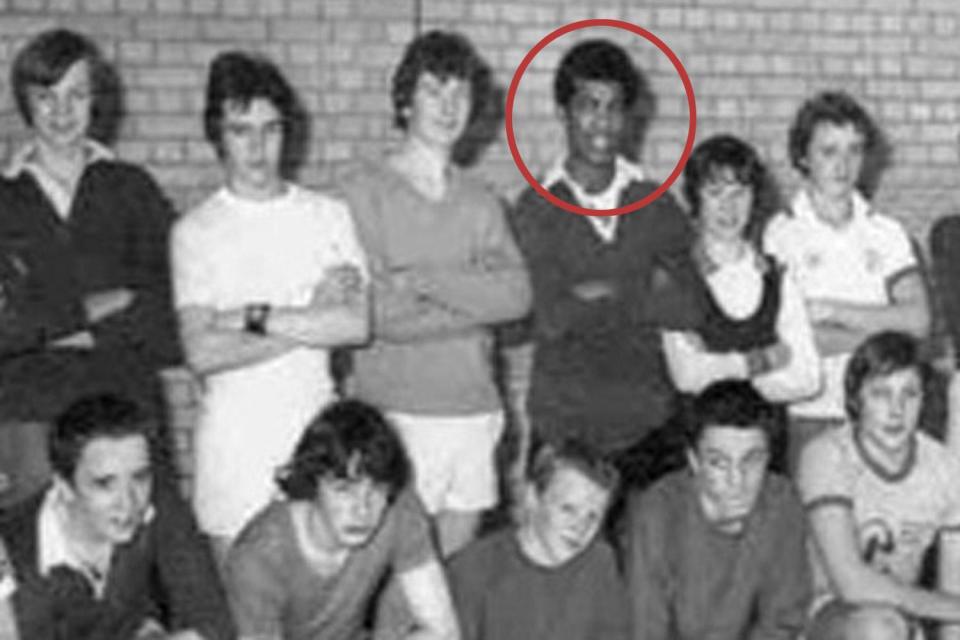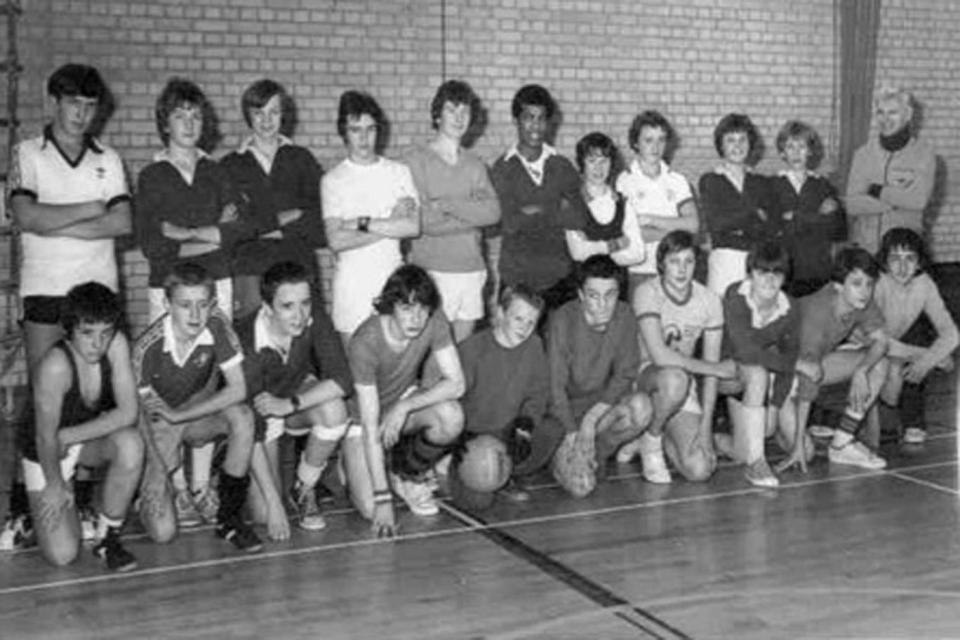Pictured in his school football kit: London terror attacker Khalid Masood

These are the first pictures of Westminster killer Khalid Masood seen as a teenager at school.
One black and white image shows Masood as a young footballer smiling and standing in the back row of the photograph with his arms folded.
In the picture he is captioned under the name Adrian Ajao, his stepfather Philip’s surname during his school years.
The picture is not dated but appears on the website of the Huntley School for Boys in Tunbridge Wells in Kent where he grew up.

There is nothing in the picture that indicate he would go on to become the terrorist who mowed down 50 people on Westminster Bridge on Wednesday and knife to death police constable Keith Palmer.
A second picture, believed to be from 1980, shows him with classmates at the school.

A former friend at the school told the Standard he was a “clever, normal guy” who “liked girls and fags”.
Graham Walmsley today told how the terrorist was “one of the lads”, who played football and rugby for their school Huntley School for Boys in Tunbridge Wells.

Mr Walmsley, 52, told the Standard: “He was just a normal kid. He got on with everybody. He was first to the girls and first to the fags. He was one of the lads.”
There is no indication any of the other people in the photos kept in contact with him.
Mr Walmsley said: “He had two or three girlfriends. Next door was an all girls’ school. At lunchtimes you would go down the woods and see how many you could pull.”
He added that Masood had had a tracheotomy operation at some point, leaving him with a scar on his neck.

The former friend said Masood never showed any kind of religious zealotry, and was “one of the clever ones” out of their group of friends.
He never turned up to school reunions, however, he added.
The picture was taken as part of a charity football “marathon” to raise money for a new sports hall, Mr Walmsley said.

Masood’s first conviction was in November 1983 for criminal damage when he was 19.
In 2000 he sliced open Piers Mott's face while slashing at his car during a row in the East Sussex village of Northiam, where Masood, then Adrian Elms, lived with his first wife and children.
The then 35-year-old told Hove Crown Court he snapped because of racism in his local community. He received a two year sentence.
Three years later, after his release, he was jailed again for stabbing someone in the face outside a nursing home. He is then believed to have converted to Islam.
In 2006 he jumped out of the third floor of his home in Crawley to avoid arrest as police chased him. Former neighbours described him as violent, abusive and generally “bad news”.
Police confirmed he had a long criminal record for assaults, possession of offensive weapons and public order offences.
His last was in December 2003 for possession of a knife.
He was never convicted of any offence linked to terrorism or violent extremism.
He is understood to have spent time in Lewes jail, East Sussex, Wayland jail in Norfolk, and Ford open prison in West Sussex.
Masood had also been previously known to MI5 although the prime minister said he had been considered “a peripheral figure” in relation to suspected Islamist terror threats.

 Yahoo Sport
Yahoo Sport 





































